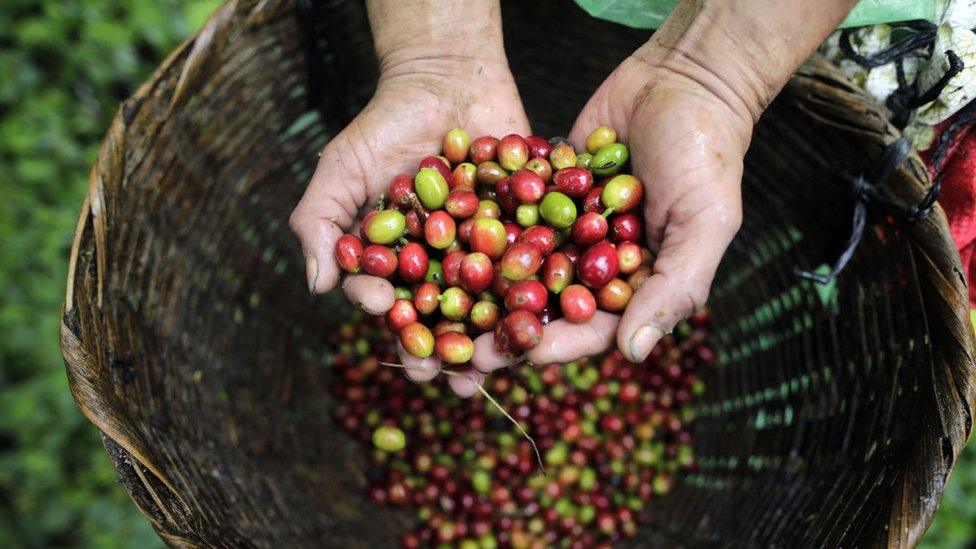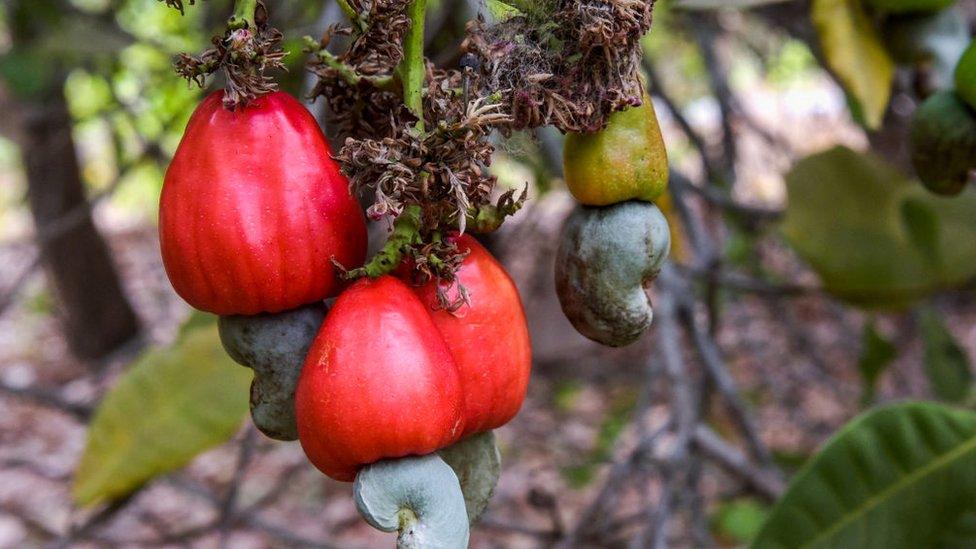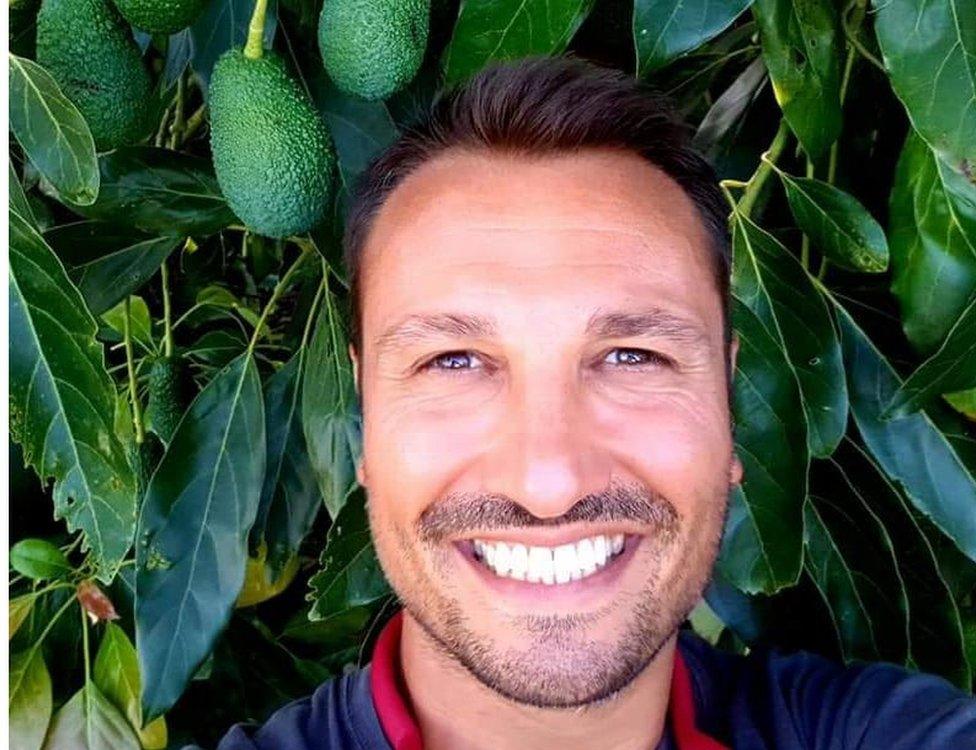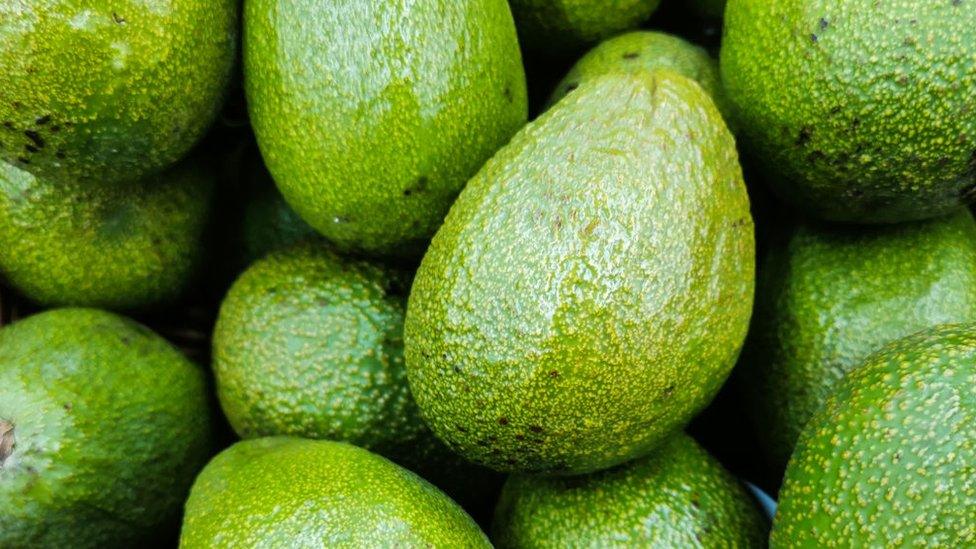Climate change: Key crops face major shifts as world warms
- Published

The parts of the world suitable for growing coffee, cashews and avocados will change dramatically as the world heats up, according to a new study.
Key coffee regions in Brazil, Indonesia, Vietnam and Colombia will all "drastically decrease" by around 50% by 2050.
Suitable areas for cashews and avocados will increase but most will be far from current sites of production.
The authors say that greater efforts must be made to help farmers adapt.
Coffee is one of the world's most important crops, not just as key beverage but as a livelihood for millions of small farmers.

Consumer demand for avocado has seen a massive rise in imports from producer countries
And thanks to growing consumer preferences in richer countries, demand for avocados and cashews has increased substantially in recent decades.
While the threat to coffee from climate change has been well documented in recent years, there is little information about how rising temperatures will impact avocados and cashews.
In this study, the authors looked at how rising temperatures and changing rates of precipitation will impact the three crops over the next 30 years. The researchers have also, for the first time, incorporated information about land and soil characteristics.
Coffee is the most susceptible crop to high temperatures. In those countries accounting for the majority of the world's production of Arabica - the dominant coffee variety - suitability for growing the crop will decrease by around half by 2050 - a "drastic" reduction, according to the report.
Some key areas will see a heavier impact. In the lowest temperature scenario, there would be a reduction of 76% in Brazil's most suitable areas for coffee. In Colombia it would shrink by 63%.
Some regions at the northern and southern ends of today's growing areas will become more suitable, including Argentina, South Africa, China and New Zealand among others.

Coffee facer the biggest challenges from rising temperatures
But according to the authors, this doesn't mean that these new regions can easily replace the current sites.
"The key message for those that are in the main producing regions today is that farming systems have to adapt to the changing conditions," said lead author Roman Grüter, from Zurich University of Applied Sciences.
"If there is already coffee grown in a new area where it is just about possible with some management options, it might get easier or might be possible to expand but it doesn't mean that we will get perfect coffee growing regions within 10 years or so."
For cashews, the picture is different. Overall, the areas of the world that are highly suitable for growing the crop will increase by 17%.
However, in some of the countries that currently are reliant on cashews as a key cash crop the news is not good. India loses significant areas of suitability, while Benin loses half its suitable areas under the lowest modelled increase in temperature.

Cashew apples growing in Bissau
For avocados, the picture is also complicated - especially in the biggest producing countries.
Mexico, the world's largest producer, sees a major increase in suitable lands, up over 80%. However, Peru - another major grower - loses around half its suitable areas under the same climate model.
While the rise in temperatures and changes in rainfall patterns might make some areas more suitable, the authors are concerned that a major shift to develop these crops in new regions might see more forests converted to farmland or a rise of invasive species.
"In regions that might get more suitable for growing those crops, it is important to make sure that there are no negative environmental impacts such as deforestation," said Roman Grüter.
"In all of these changes, the local stakeholders, the local communities have to get involved in these changing processes. It should be really participatory."

The Sicilian experience
A temperature rise of around 1C over the past 30 years has seen farmers in Sicily turn to a range of new crops more suited to warmer conditions.
One of them is Andrea Passanisi, who grows avocados close to Mount Etna. Along with other producers, this change has been very successful for Andrea.

Sicilian avocado grower Andrea Passanisi says that climate change is having a significant impact
However, as temperatures continue to rise, growing conditions are getting more difficult.
"The real climate change here is in the seasons," he told BBC News.
"Once it was cold in November and December, now it is January or February - that is not good for avocados."
Increased levels of drought and intense downpours are also challenging for farmers.
"If you grow on land that's not suitable for avocado, it's the end," Andrea said.
"We will continue to grow, as we have good land, but we will not have as much fruit."

While the changing temperatures might seem to be bad news for current growers of these crops, there are some active steps that producers can take that could mitigate climate change.

"It is possible that some regions where avocados are currently grown the use of the genetic variability of avocado might help," said Dr Joaquin Guillermo Ramirez Gil, from the National University of Colombia, who wasn't involved in the new study.
"This species has three 'races' with different geographical origins, which makes it quite 'plastic' to adapt to different climatic conditions.
"There are also local adaptations and new management alternatives such as the use of bio-stimulants and nanotechnology-based products as a basis for reducing stress due to extreme weather conditions."
The research has been published, external in the journal Plos One.
Follow Matt on Twitter, external.